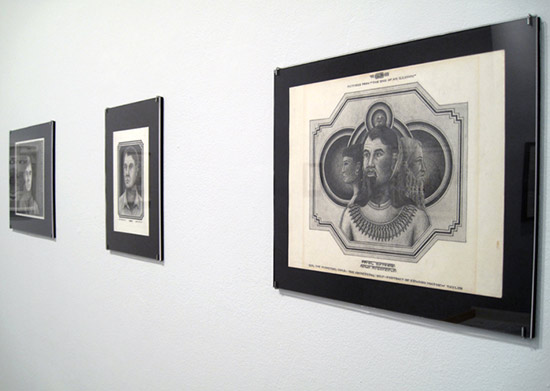
images courtesy of Art Agenda
Thanksgiving is over, and the countdown is on: a month left for buying or making gifts, if you’re of the gift-giving persuasion. But time winds faster at White Columns, where the Frederick Loomis show is up for just one more week. Priorities, people. Get thee to White Columns.

It’s the first solo show in New York for San Francisco-based artist Frederick Loomis, who presents work by Edward Matthew Taylor, a fictitious character. Taylor has spent more than 23 years developing The Third Testament Project: The Genesis of the Coming Race of Human Computers, graphite works on paper portending the human-computer future that awaits us. These offerings take the form of mandalas, flow charts, tarot cards, and day planners describing the path we have taken and will take toward human-computer oneness. One matrix includes the category “visionary enablers” under which electronic music, the soundtrack for 2001: A Space Odyssey, and techno (“trance,” it says in parentheses besides it) fall. There’s also a drawing announcing “The DIOS Neurocontroller Firmware Processing Array” in which microchips replace cells, as well as a fake New Yorker cover featuring the DIOS Neuroprocessor. In Taylor’s world, human religions have become obsolete and replaced by the Integrated Operating System or “DIOS,” which is also the Spanish word for God.

The show is weird and funny and eerily familiar. Some of the drawings look like those that the hunched over kid in your high school math class drew of Egyptian royalty ascending to the throne (…or something…), while others resemble 60s-era astrology diagrams or engineering specs. Pages ripped from day planners lie on a table at the center of the gallery room, featuring scribblings that detail the transition of the world we know today to the tech-filled spirituality of tomorrow. The works together seem like artifacts gathered from a mentally unstable Unabomber-type who we dismiss at our peril.
Donning such a persona is affective for Taylor/Loomis because the works achieve precisely the opposite. Instead of pooh-poohing the amateur-like drawings and scrawled notes, it’s worth asking to what degree they reflect the present day. Long lines of devotees crowd Apple stores with the release of the iPad; the PC guy battles the Mac guy, like Christians clashing with Muslims. And as bioengineering continues to develop medical devices we incorporate into our unhealthy selves in order to survive, how far are we really from turning into the human-computers the show offers? See it before it goes down on December 4; the gallery is a nice reprieve from the holiday hustle and bustle.

 RSS
RSS
